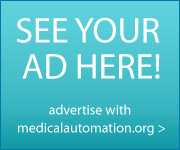CONFERENCES
2009 Conference Overview
In the current debate over American healthcare, two background events, in the early 1960’s, now figure prominently. Mortality due to heart attacks peaked in 1963. The incidence continued to rise, but the death rate fell-as medicine found ways to convert coronary thrombosis and other acute diseases in to chronic conditions. The following year, the “baby boom” ended. For eighteen years, 1946-1964, the birth rate exceeded 20 per 1,000 populations; today, it is 13.82. Seventy-eight million Americans fall into the “baby boom” category, and their aging-the oldest reaching 65 in 2011-represents the fastest growing segment of the population. Their health, their fate affects us all.Aging and sickness are challenges to be sure, but not forlorn conclusions. Bio/Info/Nano technologies now exist that hold an ameliorating scenario. They can sustain wellness; indeed, they can automate wellness so that the elderly can retain their independence, the disabled can become re-enabled, and healthcare can become more accessible and affordable than most pundits imagine. If so, this would not be the first time a gloomy forecast opened upon a golden age. Judge for yourself at the Medical Automation International Conference, December 4, 2009, at the Center for Innovative Technology, Dulles, Virginia.
Learning Objectives
• Describe the methods and processes, working in concert with technology, that will shape a more efficient and effective healthcare system
• Avoid costly technology “solutions” that do not streamline medical procedures
• Apply practical knowledge when implementing technology solutions to enable aging in the home

